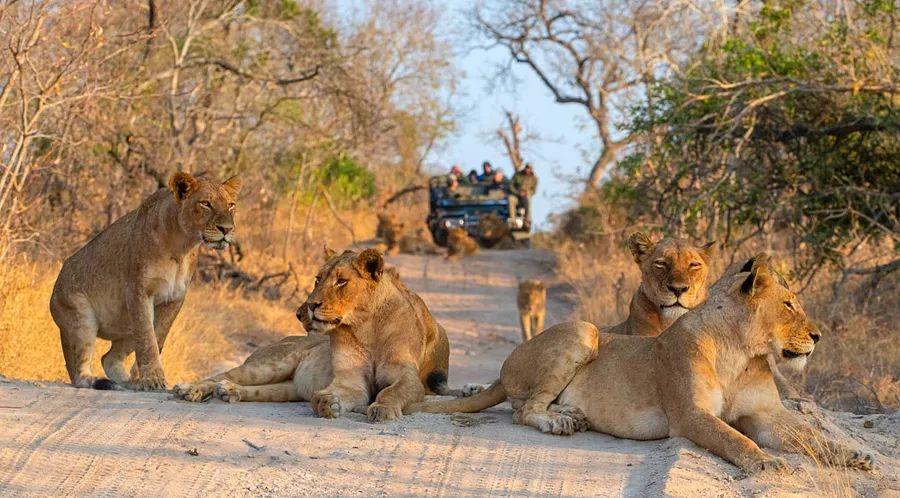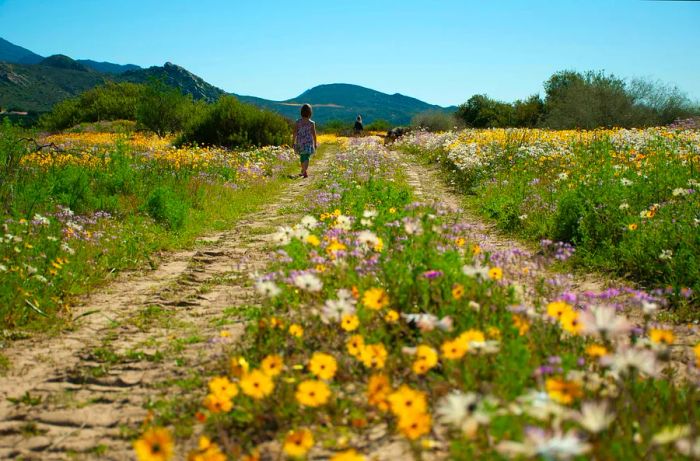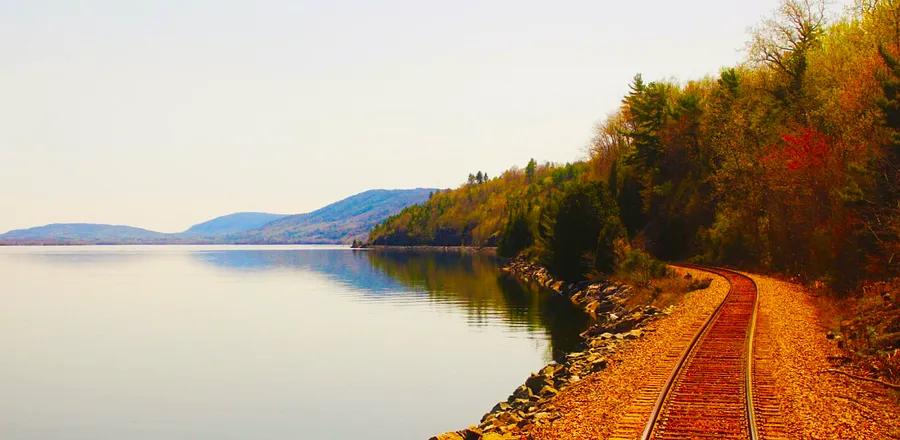15 Amazing Experiences to Have in South Africa

It’s widely known that South Africa ranks among the top destinations for experiencing the Big 5 on safari.
You could visit just for the safari and still leave thinking South Africa is unbeatable. However, there’s a wealth of wonders in this captivating region at the southern tip of Africa.
South Africa’s rich ethnic and cultural diversity shapes its cuisine and artistic expressions in fascinating ways. The landscape is breathtaking, featuring crashing waves along shorelines, vibrant wildflower-strewn deserts, wildlife-rich bushveld, and lush tropical forests. The nation boasts urban hubs, quaint wine regions, and significant cultural practices. The legacy of apartheid is confronted directly at many key sites.
You can hike, surf, kayak, fish, watch whales, ride horses, dive with sharks and crocodiles, and gaze at stars in some of the darkest skies on Earth. The challenge is knowing where to start in planning your journey through this richly diverse and blessed land. Kick off your trip planning with this guide to the top activities in South Africa.
 In July, Namaqua in the Northern Cape bursts into color with blooming flowers. Ilse Oberholzer/Getty Images
In July, Namaqua in the Northern Cape bursts into color with blooming flowers. Ilse Oberholzer/Getty Images1. Stroll through the wildflower fields of Namaqua
For most of the year, the remote area known as Little Namaqualand appears arid, resembling a sunbaked desert in South Africa’s Northern Cape. However, during a brief period in July, following the winter rains, this landscape transforms with billions of vibrant blooms. A kaleidoscope of flowers blankets its diverse terrain, ranging from dry plains to lush valleys and majestic mountains.
What truly distinguishes this spectacle is the remarkable diversity of flowers; over 3,500 species thrive here, with more than half being rare or endemic, found nowhere else on the planet. The iconic Arctotis, or African daisy, stands out, while Gazania shines with vivid yellow and orange petals, and Carpobrotus, known as pigface, spreads along the ground.
The prime locations to witness the stunning floral display are Richtersveld, framed by expansive canyons and rugged mountains; Skilpad Wildflower Preserve, located west of Kamieskroon within the larger Namaqua National Park, which is a fantastic spot for admiring the famous Nama daisies; and the vast Goegap Nature Reserve near Springbok, home to around 600 indigenous plant species across its 14,973 hectares (37,000 acres).
Planning tip: Accommodations within the park, mainly campsites and chalets, are in high demand during this brief blooming period. To secure a spot, make reservations as soon as they become available (typically 11 months in advance), or consider staying in nearby towns like Kamieskroon and Garies.
2. Experience the Big 5 and other wildlife in South Africa’s parks
As dawn breaks over the bushveld, a herd of elephants thunders by, a leopard snacks high in a tree, and a lion stealthily tracks its prey. These are the highlights of a safari in South Africa, where you're likely to see the Big 5 (lion, leopard, rhino, buffalo, and elephant) in national parks and wildlife reserves throughout the nation.
Kruger National Park stands out as the premier game reserve, covering 19,485 sq km (7,523 sq mi) of diverse habitats, including bushveld, tropical forests, savannah, and mountains, boasting over 140 mammal species. Addo Elephant National Park in the Eastern Cape is notable for being the world's first “Big 7” Conservation Area, home not only to the classic Big 5 but also to marine species like the great white shark and southern right whale.
Hluhluwe-iMfolozi Park in KwaZulu-Natal holds the title of South Africa’s oldest game reserve. Established to protect and restore Africa’s rhino population, this park is undoubtedly the premier destination in South Africa for witnessing these unique, one-horned giants up close.
South Africa boasts 19 national parks and numerous private game reserves, each providing a remarkable wildlife adventure where every day offers something new and exciting.
Planning tip: Schedule your visit between June and September for the best chances of spotting wildlife. During these drier, cooler months, animals are more likely to gather around watering holes.
 The panoramic views from the summit of Table Mountain are absolutely breathtaking. Justin Paget/Getty Images
The panoramic views from the summit of Table Mountain are absolutely breathtaking. Justin Paget/Getty Images3. Hike or take a ride up the iconic Table Mountain in Cape Town
The flat-topped Table Mountain towers over Cape Town, rising 1,085 meters (3,560 feet) as a natural wonder of sandstone and granite, cherished for its stunning views that include the shimmering Table Bay, historic Robben Island, and the sprawling City Bowl below.
Numerous trails meander up the slopes of Table Mountain, revealing valleys filled with fynbos (the local floral kingdom), shaded forests, and picturesque waterfalls. The most frequented route is the Platteklip Gorge Trail, a 2.8-kilometer (1.8 miles) climb that serves as nature's StairMaster, rewarding hikers with breathtaking vistas at every turn.
For a quieter experience, opt for the 1.5-kilometer (0.9-mile) Kloof Corner, a thrilling hike that offers stunning views of Lion’s Head, the Twelve Apostles, and the Cape Town City Bowl. The challenging 2.5-kilometer (1.5 miles) India Venster Trail ascends along the mountain’s face beneath the aerial cable car. Alternatively, you can take the cable car for a quick five-minute journey to the summit.
Planning tip: Many trails in South Africa have limits on the number of hikers allowed at once, so make sure to reserve your spot in advance and consider hiking in a group for safety (some longer trails even mandate that you don’t hike alone).
4. Explore the lessons of South Africa’s apartheid history in Johannesburg
South Africa has taken significant strides to reconcile its apartheid legacy through educational initiatives at various sites. The Apartheid Museum in Johannesburg serves as a poignant and informative starting point, featuring exhibits that chronicle the apartheid era with videos, documents, and photographs.
At the Hector Pieterson Memorial and Museum in Soweto, poignant testimonies, videos, and photographs recount the heartbreaking tale of a 12-year-old boy who became the first casualty of police violence during student protests against the use of Afrikaans in schools in 1976. Close by, you can visit the Mandela House Museum, the modest four-room home where Nelson Mandela lived, now showcasing family photos and personal artifacts that offer insight into the life of the revered anti-apartheid icon who emerged as South Africa’s first democratically elected president after 27 years of imprisonment.
 The Cape Winelands are recognized as one of the most stunning wine regions globally. Roopam Dey/EyeEm / Getty Images
The Cape Winelands are recognized as one of the most stunning wine regions globally. Roopam Dey/EyeEm / Getty Images5. Savor Pinotage in the Cape Winelands
When the Dutch settled in South Africa around 350 years ago, the Dutch East India Company created a supply station for their ships. Since these vessels required wine, the Company collaborated with the French, leading to vineyards flourishing in the fertile valleys of what we now call the Cape Winelands. Over the years, winemaking techniques have evolved, culminating in the creation of Pinotage, South Africa’s distinctive red wine that blends elements of Pinot Noir and Cinsault.
Today, in the democratic era, the Cape Winelands stands as one of the premier wine regions globally. It boasts a rich tapestry of vineyards, numerous wine estates, local markets, quaint museums, gourmet restaurants, and three historic wine towns from the 17th century: Franschhoek, founded by French Huguenots; Stellenbosch, known for its Cape Dutch architecture; and Paarl, settled by 23 families from Stellenbosch. Ideal spots to taste Pinotage include Delheim, nestled on the slopes of Simonsberg Mountain near Stellenbosch, and Lanzerac, established in 1692, offering breathtaking views of mountains, vineyards, and oak-lined gardens.
Detour: If you want a respite from the wine tastings, consider a drive (or bike ride) along Bainskloof Pass outside Paarl. This picturesque mountain pass stretches nearly 30km (19 miles) and presents stunning vistas, complete with a caravan park at its midpoint.
6. Wander the Wild Coast
The Wild Coast is a pristine 250km (155-mile) stretch along the Indian Ocean in the Eastern Cape, characterized by refreshing sea breezes, thundering waterfalls, lush green valleys, and untouched beaches bordered by cliffs. It's an ideal retreat for those seeking solitude in nature, where you'll likely encounter more cattle than people. Be cautious: the roads are pocked with potholes, and fuel stations are sparse, which helps keep the less adventurous at bay.
Engage in activities like hiking, swimming, horseback riding, canoeing, surfing, or simply sunbathing on your secluded beach. The trek to Hole in the Wall is a scenic three-hour journey over rolling hills and through quaint villages, culminating at the iconic rock arch and its inviting lagoon. The Xhosa River offers a canoeing haven with its crystal-clear waters and vibrant Xhosa huts lining the shore. Jbay Lagoon, known for its mirror-like surface, attracts paddleboarders, kayakers, and canoeists. The Xhosa community has thrived in this magical region for centuries, their turquoise rondavels dotting the verdant landscape.
This area is also the birthplace of Nelson Mandela, a prominent figure in the anti-apartheid movement, with several small museums in Mthatha and Quno welcoming visitors to learn more about his legacy.
Detour: Embark on a hike along one of the trails in Dwesa Nature Reserve, where you can explore unspoiled forests, grasslands, and coastlines. It’s a wildlife sanctuary, home to approximately 290 bird species.
 Southern right whales can be seen migrating from Antarctica. wildestanimal/Getty Images
Southern right whales can be seen migrating from Antarctica. wildestanimal/Getty Images7. Experience whale watching by land or sea
With around 37 species of whales and dolphins gracing South Africa’s waters, it's no surprise that whale watching is a favored pastime. You can board a boat from numerous locations along the country's three coastlines to observe these majestic creatures in their natural habitats.
However, here's an interesting twist: in some areas, you don’t need a boat to see whales—you can catch a glimpse from the shore. Head to Lambert’s Bay, Yzerfontein, or Plettenberg Bay for shore-based sightings, but the most renowned spot for land-based viewing is Hermanus, located about 100km (62 miles) east of Cape Town. From June to November, southern right whales make their annual journey from Antarctica, surfacing to splash, breach, and lobtail just off the coast. The town even features a whale crier who signals with a kelp horn when whales are near the shore.
8. Dive into Zulu history
The Zulus ruled a significant portion of modern-day KwaZulu-Natal from 1816 to 1897, becoming one of Africa’s most notable empires. Despite their formidable warrior skills, they were defeated by the British in the 1870s, leading to their kingdom's incorporation into the Union of South Africa. Nevertheless, their culture thrives—they remain South Africa’s largest ethnic group—and the Zulu royal family is still prominent, serving in a ceremonial capacity in KwaZulu-Natal.
To immerse yourself in Zulu culture, visit the Battlefields Region in the northwest of the province, where the Zulus engaged in 63 battles against various invading forces. Sites such as Blood River and Isandlwana feature monuments and museums that honor these historic confrontations.
 You’ll undoubtedly find a place for yourself on Durban's expansive coastline. Diriye Amey/500px
You’ll undoubtedly find a place for yourself on Durban's expansive coastline. Diriye Amey/500px9. Soak up the sun along Durban's Golden Mile
Boasting over 320 sunny days annually, Durban is a cherished destination known for its golden-sand beaches caressed by the Indian Ocean's vibrant waters. The renowned Golden Mile, stretching approximately four miles from uShaka Beach in the south to Suncoast Casino and Entertainment World in the north, offers an array of beaches and activities to suit everyone’s tastes.
Beginners can catch waves at South and Addington beaches, while anglers can cast their lines at Bay of Plenty Beach. Just north of the Golden Mile, Umhlanga Rocks exudes a lively holiday atmosphere. For picnics or leisurely hangouts with friends, Blue Lagoon is a fantastic option. A promenade lines much of the Golden Mile, where Zulu artisans display their crafts, and joggers, walkers, cyclists, and skateboarders bask in the sun.
10. Discover the story of humanity's evolution
Deep beneath the highveld of Gauteng, researchers in the 20th century uncovered two ancient relatives of humankind in the region's intricate limestone caves: Mrs Ples, a 2.1-million-year-old Australopithecus Africanus skull, and Little Foot, a nearly complete Australopithecus skeleton dated to three million years ago. In 2015, a new human relative, Homo naledi, was discovered, though its exact place in our evolutionary lineage remains uncertain.
You can delve into this important archaeology at the Cradle of Humankind, located about an hour northwest of Pretoria. Engaging, world-class exhibitions at the Maropeng visitor center provide context, and you can venture underground to explore the excavation site at Sterkfontein Caves.
 Step back into the golden age of travel with a ride on South Africa's Blue Train. Michael Heffernan/Dinogo Planet
Step back into the golden age of travel with a ride on South Africa's Blue Train. Michael Heffernan/Dinogo Planet11. Experience the Blue Train
Relax and immerse yourself in the nostalgia of luxury travel aboard the Blue Train, a five-star hotel on wheels heralded as one of the premier rail journeys globally. Originating in colonial times to cater to the lavish tastes of 19th-century British diamond and gold tycoons, expect elegant birch paneling, sumptuous leather seating, and exquisite silver service during gourmet five-course meals.
The Blue Train operates between Pretoria and Cape Town, with a two-night stay onboard. While you’ll revel in top-notch service and elegant decor, the stunning landscapes outside your window will captivate you: from cactus-studded deserts and rugged mountains to vineyard-laden hills and lush valleys, all culminating in breathtaking African sunsets. This lavish experience includes meals, drinks, Monte Cristo cigars, and even a personal butler, all at a premium price.
Planning tip: Secure your Blue Train ticket during the off-peak season (Nov–Aug) to enjoy significantly reduced fares.
12. Journey along the magical Garden Route
Embark on a scenic road trip through charming coastal villages, shimmering beaches, and mist-clad mountains along the Garden Route, often referred to as the Garden of Eden. Covering 200km (125 miles) from Mossel Bay to Storms River, take your time to explore this breathtaking route. Dive to encounter Knysna seahorses, surf the roaring waves, hike through shadowy forests, spot wild elephants, bungee jump into deep gorges, or simply relax on a secluded beach. Ideal base towns include Plettenberg Bay and Knysna. Allocate at least four days for your adventure, although you could easily linger for weeks.
Detour: Make a Saturday morning stop at the Wild Oats Community Farmers Market for fresh produce, baked goods, and breakfast delights, located just 1.5km (1 mile) east of Sedgefield. This market is a cherished destination along the Garden Route.
 Make sure to visit Boulders Beach on your way to Cape Point to catch a glimpse of African penguins. iStockphoto/Getty Images
Make sure to visit Boulders Beach on your way to Cape Point to catch a glimpse of African penguins. iStockphoto/Getty Images13. Journey from Cape Town to Africa’s southwesternmost point
At historic Cape Point, also known as the Cape of Good Hope, the Atlantic and Indian Oceans meet roughly 65km (40 miles) south of Cape Town. Standing on this wind-swept, rugged promontory offers a thrilling experience as you gaze at the tumultuous waves and deep indigo waters stretching endlessly. These perilous seas have troubled sailors for centuries, resulting in numerous shipwrecks. For breathtaking views, ride the Flying Dutchman Funicular or ascend the steps to the 86m (285ft) lighthouse at the summit.
Planning tip: Take your time on this journey. The drive from Cape Town reveals stunning beaches, dramatic cliffs, quaint fishing villages, and vast stretches of remote bushveld where zebras, ostriches, and baboons roam. The African penguin colony at Boulders Beach is one of only two land-based penguin colonies worldwide.
14. Experience Cape Town’s culinary heritage
Cape Town's rich history of colonization and immigration has birthed a vibrant tapestry of cultures, each adding its own traditions and customs. This blend has resulted in the city’s celebrated and diverse cuisine, often referred to as the foodie capital of South Africa. Here, you’ll discover dishes shaped by British, French, Indian, Dutch, Asian, African, and many more influences.
One notable group is the Cape Malay community, which draws from Southern African, Asian (particularly Indonesian), and Dutch influences. They are famed for their flavorful spice-laden bredies (stews), curries, savory snacks, and porrings (warm puddings). The braai, a term from the Dutch word braden meaning 'to roast,' is a beloved tradition across the nation. However, braai goes beyond grilling meat; it’s a social gathering for friends and family. Many township tours offer an authentic braai experience. Local chefs, such as Luke Dale-Roberts, are embracing this culinary heritage with his three acclaimed Cape Town restaurants – Test Kitchen, Pot Luck Club, and Shortmarket Club – showcasing innovative takes on traditional dishes.
Planning tip: For easier restaurant and hotel bookings, try to avoid traveling during the busy Christmas and Easter seasons.
15. Experience a sky safari in the Karoo
The Karoo's vast, sparsely populated landscapes are expansive by day and its skies equally impressive by night. In this enchanting semi-desert area, spanning nearly 500,000 sq km (1.9 million sq miles) across the Western Cape, Northern Cape, Eastern Cape, and Free State, the stars shine brightly against some of the Earth’s darkest and cleanest skies, appearing almost within reach.
It’s easy to see why the South African Astronomical Observatory, the largest in the southern hemisphere, is located here. You can join a guided tour during the day, but the highlight is definitely the stargazing safaris at night.
Planning tip: The delightful historic town of Prince Albert serves as an excellent base for stargazing.

1

2

3

4

5
Evaluation :
5/5